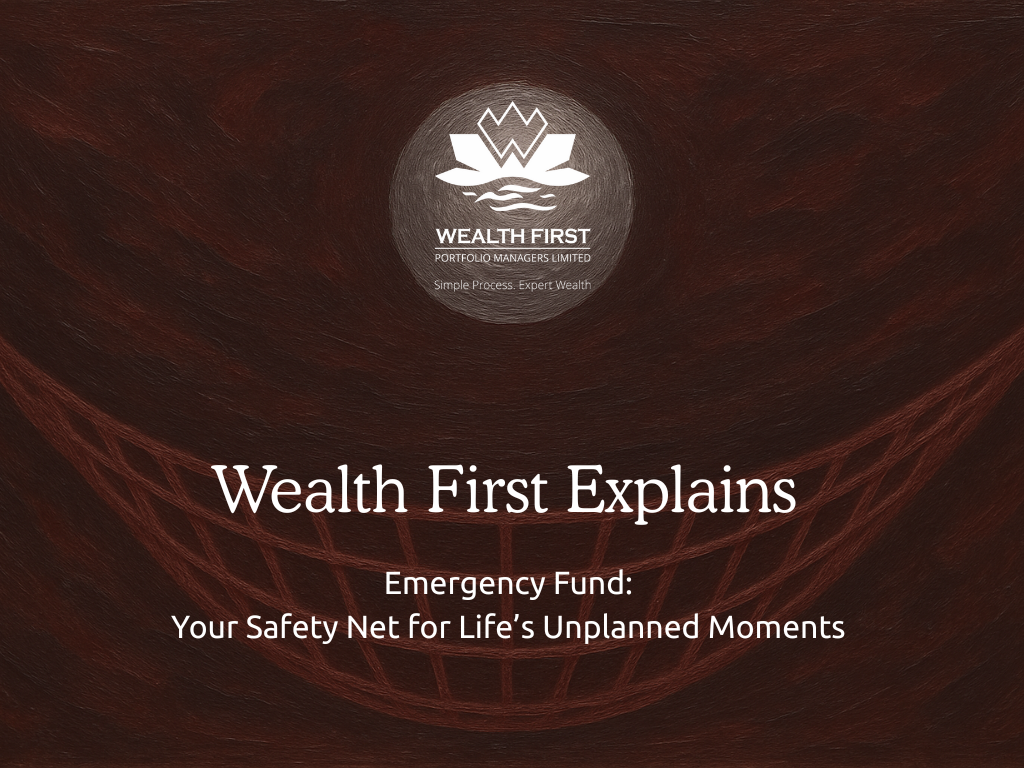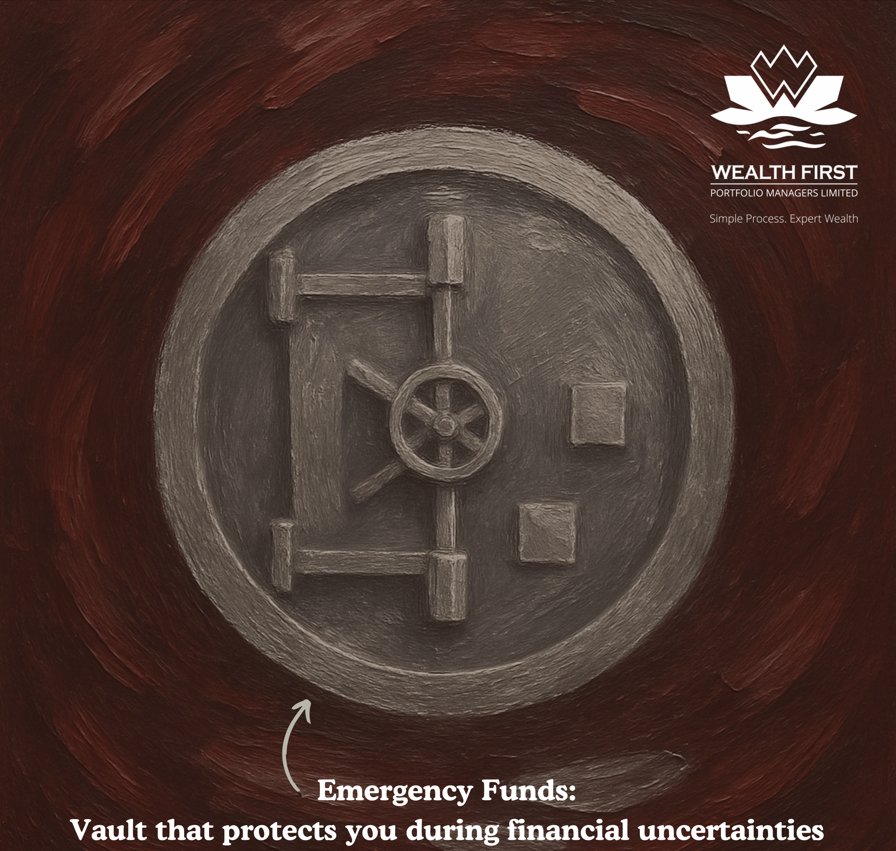
When we think of financial planning, our minds often go straight to investing—stocks, mutual funds, or long-term goals like buying a home or retirement. But before we even start investing, there’s one essential foundation every investor must have: an emergency fund.
What is an Emergency Fund?
An emergency fund is money set aside specifically to handle unexpected situations such as medical bills, sudden car repairs, temporary job loss, or urgent travel.
It is not meant for planned expenses or lifestyle upgrades. It’s your financial safety net: a cushion that keeps you from dipping into long-term investments or taking on costly debt when life throws surprises your way.

How Much Should You Keep?
Financial experts generally recommend keeping 6 to 12 months of family expenses aside as an emergency fund.
Example: If your household spends ₹50,000 per month, your emergency fund should be between ₹3,00,000 and ₹6,00,000.
This amount should cover essentials like rent/EMI, groceries, bills, education, and medical costs.
Don’t Forget Inflation
One mistake people make is building an emergency fund once and never updating it. But as costs rise, your original fund may not be enough. That’s why it’s important to:
- Review and adjust yearly for inflation.
- Top up your emergency fund to maintain its real value.
- Consider keeping the money in liquid mutual funds or short-term fixed deposits (calculate the FD returns using our wealth calculator: https://www.wealth-firstonline.com/wealth-calculator/) —they earn some interest but remain easily accessible in case of emergencies.
Benefits of an Emergency Fund
- Peace of Mind: You’re prepared for the unexpected.
- Financial Discipline: Keeps your investments for long-term goals untouched.
- Avoids Expensive Debt: Prevents the need for high-interest loans or credit cards.
- Flexibility: Allows you to handle emergencies without financial stress.
Separate from Other Goals
Your emergency fund is not the same as saving for other goals like a vacation, a car, or retirement. Those are planned future expenses. An emergency fund, on the other hand, is about financial resilience as it ensures that your wealth-building journey doesn’t get derailed by sudden shocks.
Key Takeaways
- Keep 6–12 months of expenses aside as your safety net.
- Review and adjust for inflation regularly.
- Park your emergency fund in safe, liquid options like liquid mutual funds or FDs.
- Treat it as separate from all other financial goals.
At Wealth First, we help clients build robust financial plans that covers emergency funds as well, along with other life goals.
👉 Explore more with our Wealth Calculator.
👉 Or Talk to Us to plan a strong foundation for your wealth journey.
Disclaimer
The content shared by Wealth First is for general informational and educational purposes only and should not be considered as investment advice, research, or a solicitation to buy or sell any financial product. All information in emails, posts, and articles from Wealth First is intended solely to increase financial awareness. Past performance is not indicative of future results. All investments are subject to market risks, including possible loss of principal. Readers should consult their financial, legal, or tax advisors before making any investment decisions tailored to their personal circumstances. While utmost care is taken to ensure accuracy of information, Wealth First does not guarantee completeness, reliability, or timeliness, and shall not be liable for any direct or indirect loss arising from reliance on such information. By subscribing to or engaging with our content, you acknowledge that you are doing so at your own discretion, and that Wealth First is not responsible for individual investment outcomes.
